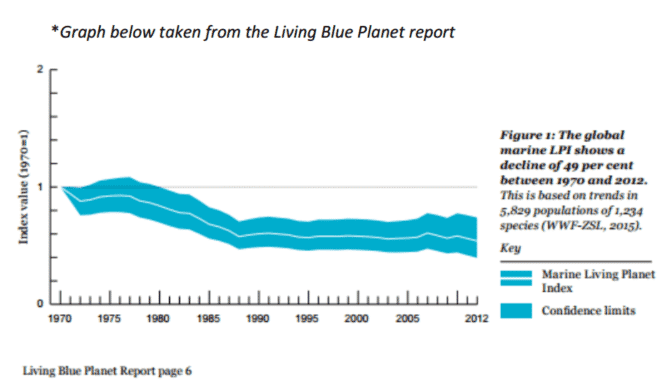The decline in marine populations trumpeted by the WWF actually occurred during the period from 1970 – 1988, since then the WWF’s own graph shows that they have remained stable.
Kathryn Stack, Managing Director of Europêche, said: "The report states that 61 per cent of commercial fish stocks are fully exploited misleadingly implying that these stocks are overfished and not sustainably exploited. In fact, if we look at the FAO report in question, it clearly states that over 70 per cent of global fish stocks are within biologically sustainable levels (below or at MSY levels i.e. full exploitation, which incidentally is the objective of the CFP and many RFMOs by 2020). It is unacceptable that an organisation such as WWF can be allowed to distort information which has a huge impact on the fishing sector's reputation."
The report has also been widely criticised for its inaccuracies with Australian Parliamentary Secretary to the Minister for Agriculture, Richard Colbeck labelling it as 'one of a string of misleading >campaigns aimed at scaring people into making donations, rather than educating the public.'
The statistics used change spectacularly when the changes are unweighted.
Stack explains: "It has been previously pointed out this week that the apparent huge declines are in fact linked to other species. So the combination of a huge drop in one particular species of bird and a healthy fish population would result in a huge drop in both species, which is not necessarily the case."
The European Commission report on the state of the fish stocks recently was overwhelmingly positive for many European fishing areas with stocks such as northern hake, cod and plaice in the North Sea and herring and flounder in the Baltic Sea identified as success stories. In fact, for demersal stocks in the North Sea, Celtic Sea and West of Scotland, fishing mortality rates are amongst the lowest levels registered. Plaice and hake have exploded in the North Sea with the highest stocks levels observed. There are now 36 stocks being fished at MSY in the North East Atlantic, compared to 27 last year and just two in 2003.
President of Europêche, Javier Garat, continued: "The number of stocks within safe biological limits has almost doubled in the last decade. The definition of overfishing has also evolved so much over the years. Where once it meant stocks below a safe minimum, it now means stocks not yet at maximum in terms of sustainable yield. What would once be considered healthy is now considered overfished. Yet, even by this new definition, a decline in the number of 'overfished' stocks could be seen well before Maximum Sustainable Yield (MSY) targets were in put in place during the CFP Reform."
Mr Garat continued: "Being selective with the facts to constantly portray fishing in the most negative light, real progress is not being made. Misleading reports such as these only serve to push the sector into further disrepute at a time when our fishermen are making huge progress towards achieving sustainable fisheries."


